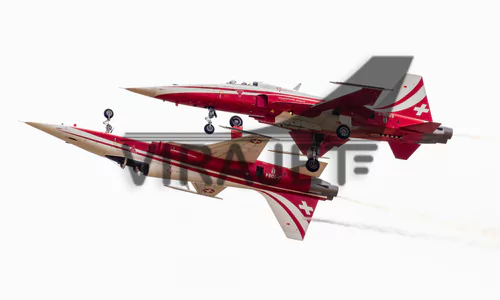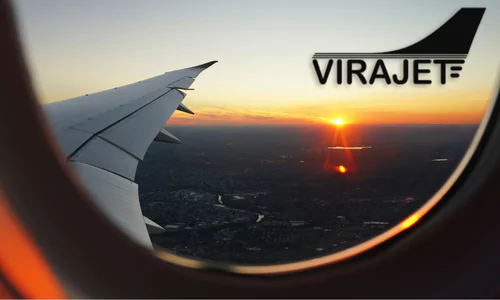How Much Fuel Do Jet Planes Consume?
Fuel consumption of jet aircraft can vary depending on a number of factors. These variables include the size and type of jet aircraft, engine power, cruising speed, payload, weather conditions, and flight distance. Additionally, factors such as engine efficiency, aircraft design, and technological advancements can all impact fuel consumption.
Fuel Consumption of Jet Aircraft by Type
Large jet aircraft typically have a fuel consumption range of 1,500 to 4,000 gallons (5,678 to 15,142 liters) per hour. However, these values can vary and increase or decrease depending on the aircraft type, cruising speed, and other variables.
For example, commercial aircraft typically have a larger fuel capacity and use more fuel when flying longer distances. Long-haul aircraft can use an average of 2,000 to 4,000 gallons (7,570 to 15,142 liters) of fuel per hour. Smaller business jets typically consume between 500 and 1,500 gallons (1,893 to 5,678 liters) per hour.
However, because different aircraft have different engines, performance levels, and designs, it is difficult to determine precise fuel consumption figures for each aircraft. The impact of operational factors and flight profiles on fuel consumption should also be considered. Jet aircraft can generally consume a lot of fuel, but current aircraft and engine technologies are constantly improving in terms of efficiency.
What Fuel Do Jets Use?
Jet A, also called aviation fuel, or Jet A-1, is the type of jet fuel used by jet aircraft. This fuel is specifically formulated for use in jet engines and boasts qualities such as low sulfur content, high energy density, and a low freezing point.
Jet A and Jet A-1 are two widely accepted international standards used worldwide and share many similarities. These fuels are made in refineries using petroleum, such as kerosene, and are manufactured according to unique standards.
The high energy density of jet fuel is one of its advantages. As a result, jet aircraft can fly farther and faster. Furthermore, the low sulfur content of jet fuel is crucial for minimizing negative environmental impacts.
Jet A or Jet A-1 is the preferred fuel for most commercial and military aircraft, although some small private jets may use another type. Alternative fuels such as Jet B and Avgas (aviation gasoline) may also be available. However, jet aircraft typically use Jet A or Jet A-1. Jet A, also known as aviation fuel, or Jet A-1, is the type of jet fuel used by jet aircraft. This fuel is specifically formulated for use in jet engines and boasts properties such as low sulfur content, high energy density, and a low freezing point.
Jet A and Jet A-1 are two widely accepted international standards used worldwide and share many similarities. These fuels are made in refineries using petroleum, such as kerosene, and are manufactured according to unique standards.
Is Aviation Fuel High-Quality?
The aviation industry uses a special fuel called aviation fuel (also known as Jet A or Jet A-1), which is produced according to strict guidelines. These standards cover key aspects such as low sulfur content, low freezing point, and low volatility. Fuel quality is essential for both safe and efficient flight. Aviation fuel is considered high quality for the following reasons:
Safety: Strict quality control procedures and global standards are used in aviation fuel production. These requirements aim to ensure the fuel is non-flammable and reduces the likelihood of explosion or combustion. Furthermore, due to its low sulfur content, it is less corrosive to engines and exhaust systems.
Performance: Jet engines are designed to operate at the highest possible efficiency and performance using aviation fuel. Aircraft can fly farther and move faster thanks to its high energy density and low volatility.
Environmental Impacts: Aviation fuel is formulated with elements such as low sulfur content and improved combustion properties to minimize environmental impacts. By doing so, it contributes to reducing emissions and the harmful effects of air pollution.
International aviation authorities and industry standards continuously monitor the quality of aviation fuel to ensure it meets performance and safety standards. Airlines and fuel suppliers regularly test the quality of the fuel and purchase only from licensed fuel suppliers. Aviation fuel, like any industrial product, must undergo periodic quality control procedures. Consequently, aviation fuel is regularly inspected and continuously improved to ensure its quality and safety.
How Much Fuel Does an Airplane Burn in 1 Hour?
Numerous factors influence how much fuel an aircraft will use per hour. These variables include the aircraft type, engine power, cruising speed, load, weather conditions, and altitude. It’s difficult to give a definitive answer, as each aircraft’s fuel consumption rate can vary. However, a broad estimate can be made that commercial passenger aircraft typically consume between 5,000 and 15,000 kg of fuel per hour. Smaller business jets can consume an average of 400 to 1,500 kg of fuel per hour.
However, these fuel consumption figures can vary depending on the aircraft’s characteristics and flight conditions. Flight speed, altitude, air resistance, wind conditions, route, and other factors can all affect how much fuel an aircraft uses. Therefore, a more comprehensive analysis is needed to determine the hourly fuel consumption of an aircraft, depending on the aircraft model, flight parameters, and flight plan.
You can contact us for our aircraft charter service.

